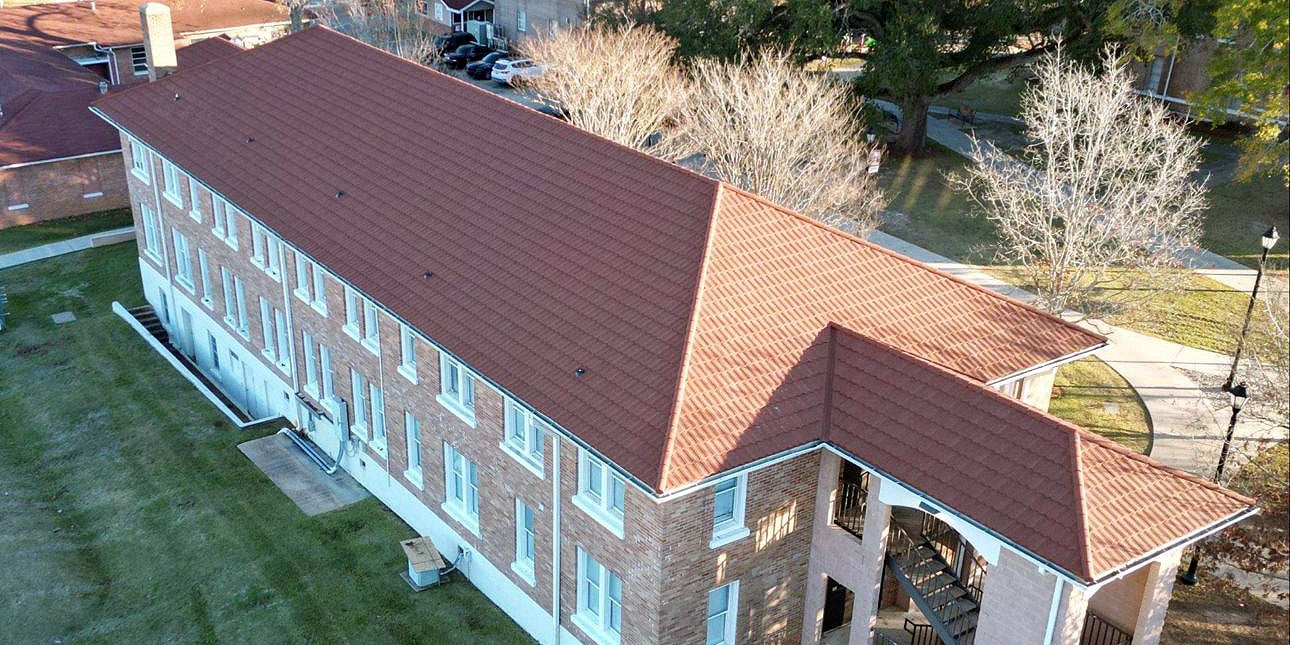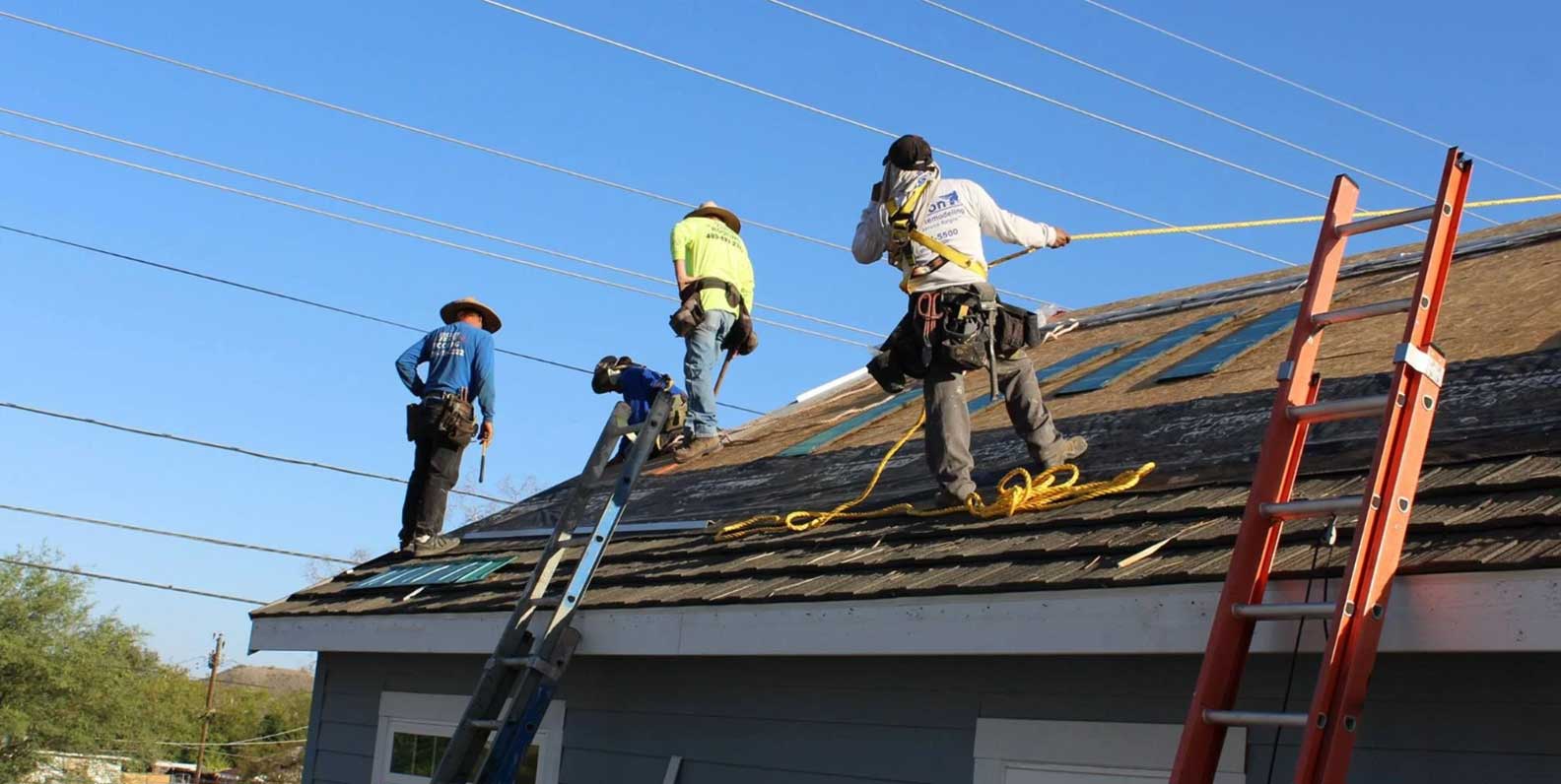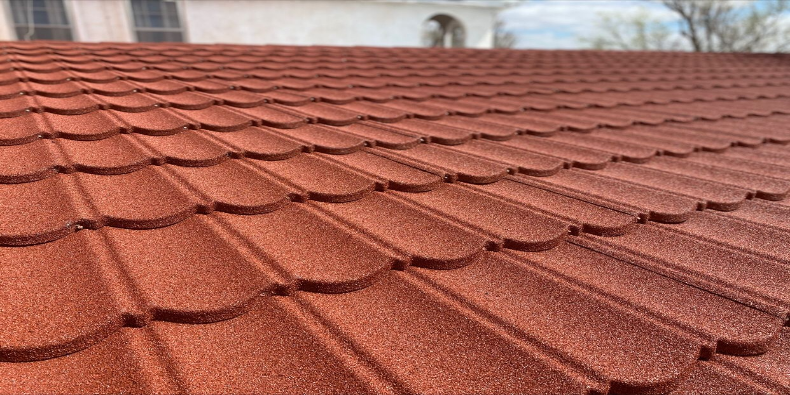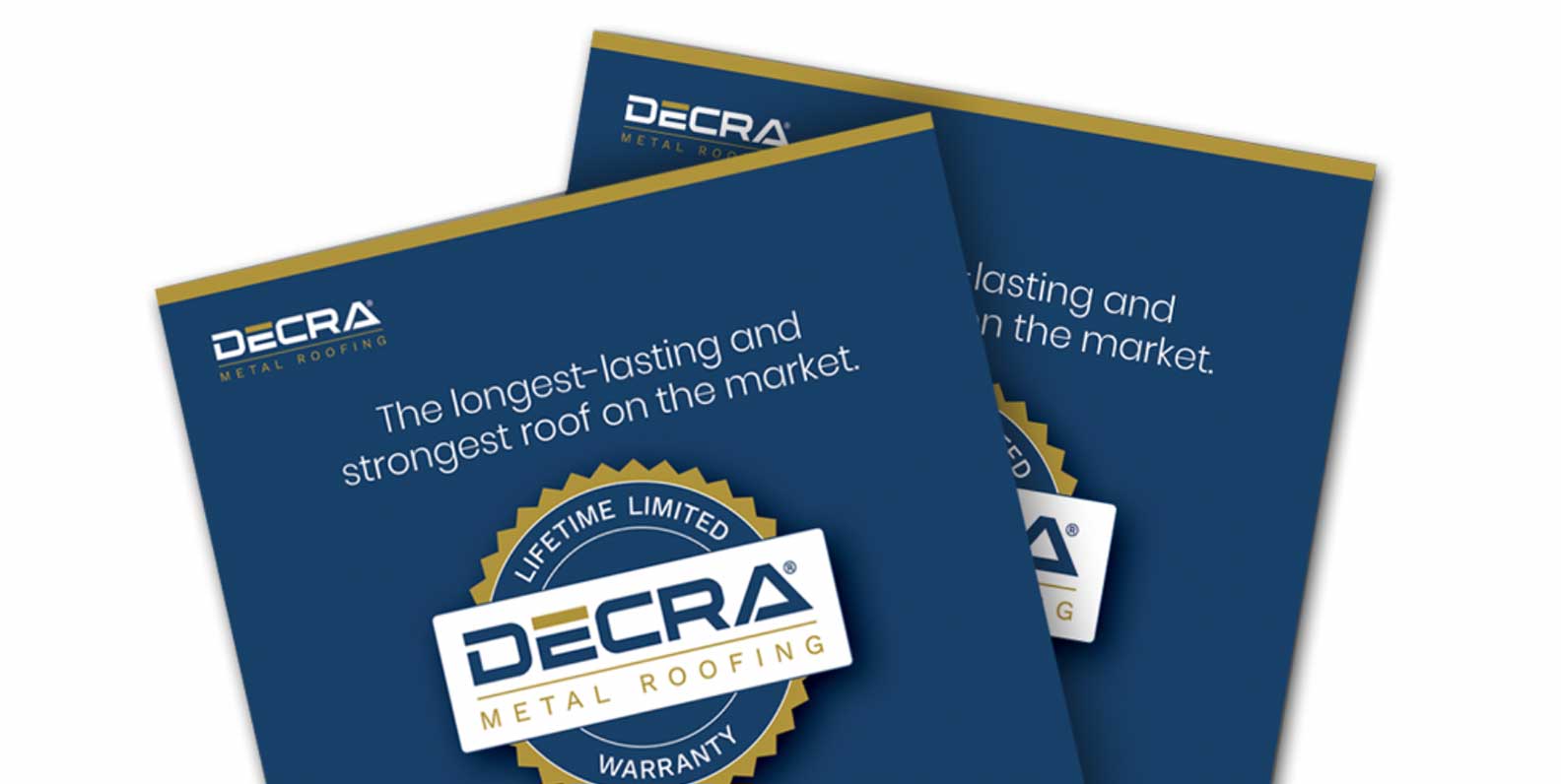Attention, students, the class is now in session. Today’s lesson is about finding the best roof for schools and universities.
We’ll discuss how to choose a durable roof that aligns with your school’s aesthetic, financial, and operational goals. Pay close attention; the right roof can reduce operational costs by as much as 50% and ensure decades of high-performance, hassle-free protection.
Additionally, we’ll explore current trends in roofing, such as the surge in demand for metal roofing among educational institutions, ranging from local community schools to prominent universities such as Texas A&M and Purdue.
Let’s get started with today’s lesson. Here’s what to look for when searching for the best roof for your school or university, including:
- The importance of choosing a durable and long-lasting roof.
- Roofing that aligns with campus and community architecture.
- Low-maintenance roofing that’s as easy as A-B-C.
- The benefits of energy-efficient roofing.
The Importance of Choosing a Durable and Long-Lasting Roof
Whether you need to replace an old roof or are researching options for a new campus building, finding a durable and long-lasting roof is crucial. The goal is to install a roof that requires minimal upkeep and provides hassle-free protection for decades.
Roofs of lesser quality often lead to ongoing issues and frequent repairs, which are costly and extremely disruptive to the learning environment.
The durability of a roofing material is directly related to its longevity. High-performance roofing materials that can withstand the elements will have a much longer lifespan since they require less maintenance and repairs.
Remember the old saying, ‘You get what you pay for’?
While some roofing materials may cost less to install, they wind up costing more in the long run due to the need for frequent maintenance, repairs, and replacements.
Take asphalt shingles, for example. As the cheapest roofing material on the market, asphalt shingles have the shortest lifespan of any roofing material and need to be replaced as often as every 12 years.
On the other hand, roofing materials such as metal roofing cost slightly more to install but have an average lifespan of 40-70 years due to their industrial-strength durability.
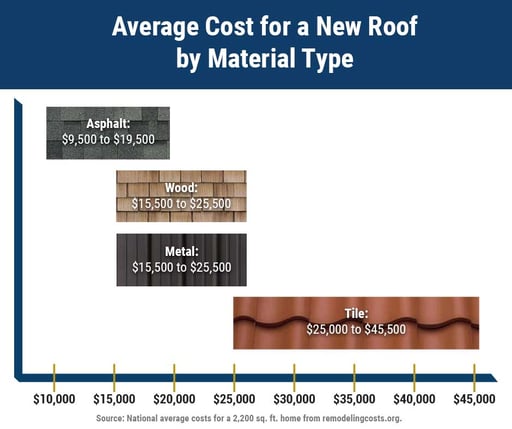
Metal roofs can endure nearly anything Mother Nature has to offer, including:
- Fire: Metal is a non-combustible material with the highest rating for fire resistance.
- Hail: Metal roofing is well-known to withstand impact from hailstones and storm debris and has the highest possible rating for hail impact resistance.
- Wind: Stone-coated metal roofing is engineered to resist hurricane-force winds and is approved for high-velocity hurricane zones.
- Snow / Ice: Metal roofing is non-porous and can resist deterioration caused by expansion caused by freeze and thaw cycles and prevent ice dams from forming
While the durability of metal roofing is tough to beat, you might think it’s too industrial-looking for campus buildings.
This is where stone-coated metal roofing comes into play.
Roofing that Aligns with Campus and Community Architecture
While the industrial strength of metal roofing is ideal for schools and universities, the industrial appearance of some metal roofing products–such as standing seam or aluminum roofing–clashes with campus architecture.
Fortunately, one metal roofing product provides industrial-strength durability without industrial aesthetics: stone-coated metal roofing.
Stone-coated metal roofing is made from high-grade steel sheets, then coated with natural stone granules. This process transforms the steel sheets into one of the most versatile roofing materials on the market.
Available in a wide range of colors and textures, stone-coated metal roofing replicates the look of traditional roofing materials–such as asphalt shingles, clay tile, and wood shakes–without sacrificing durability.
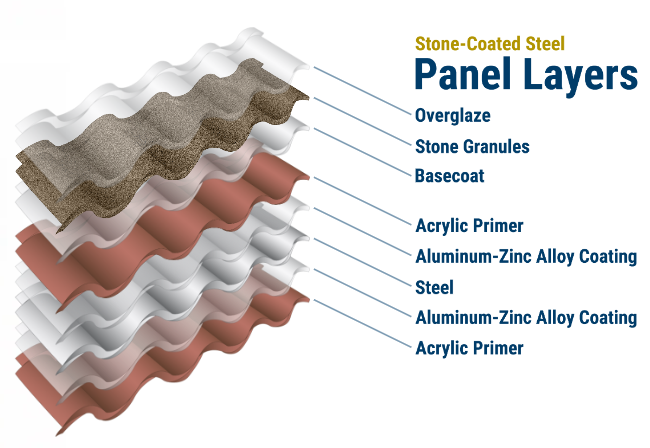
The design versatility of stone-coated metal roofing can suit any style of architecture. This is an important consideration for universities where the roofing material must align with campus architecture.
Take Texas A&M, for example. The university's inaugural president, R. B. Cousins, wanted campus buildings to feature Spanish Mission Revival architecture, honoring the region's people and culture. Characterized by red clay tile roofs, towers, and parapets, Texas A&M architecture is both distinct and iconic.
When Texas A&M needed a new roof for the Sue & Radcliffe Killam Library, preserving the historic architecture was critical.
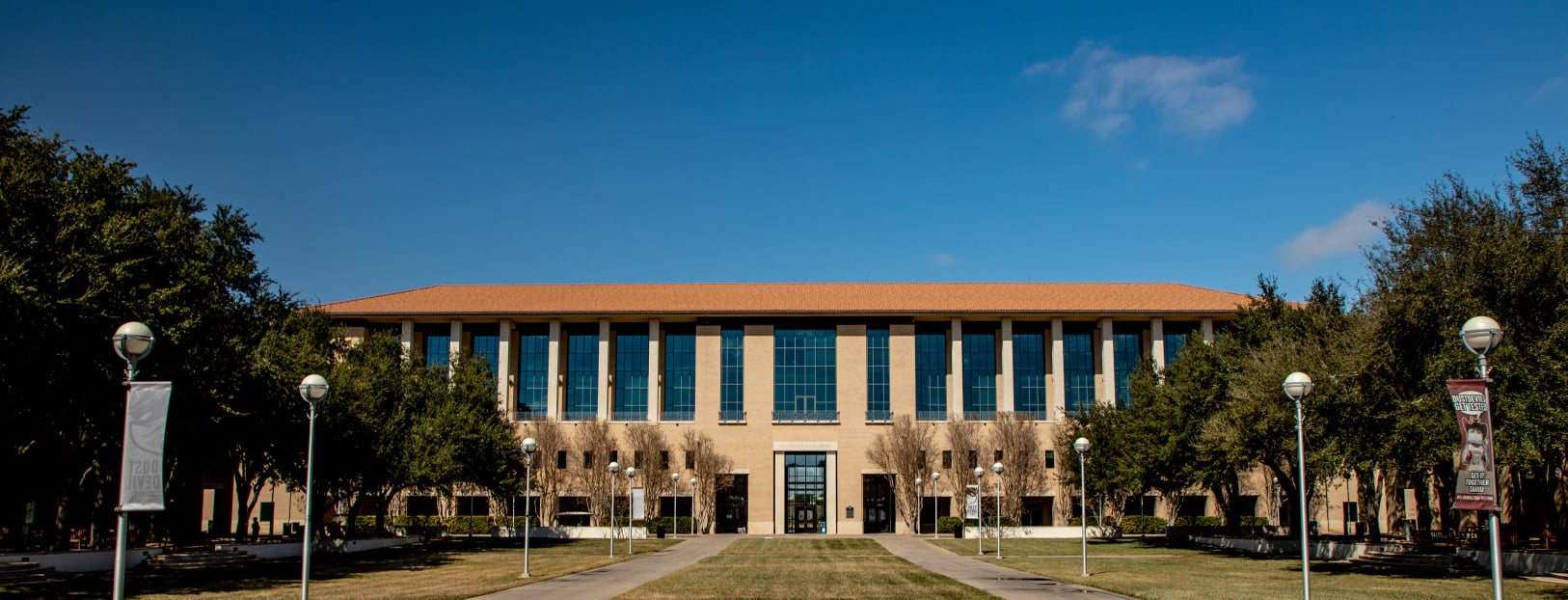
However, while traditional red clay tile roofs achieved the right look, they left much to be desired when it came to durability. Clay tile roofing is extremely delicate and isn’t ideal for regions prone to hail or harsh weather.
Stone-coated metal roofing proved to be the perfect choice for Texas A&M.
DECRA Villa Tile, a type of stone-coated metal tile roofing, aligned perfectly with the university's Spanish Mission Revival architecture. Not only did stone-coated metal roofing meet the school’s aesthetic requirements, but it also fulfilled their requirements for a durable, long-lasting, and low-maintenance roof.
Low-Maintenance Roofing That’s as Easy as A-B-C
Frequent roof repairs and maintenance are expensive, disruptive to the learning environment, and often require temporary building closures. A low-maintenance roof will eliminate the headaches of ongoing maintenance and can substantially reduce operational costs.
For example, educational facilities with metal roofing saved between 35% and 50% on upkeep and maintenance costs compared to roofing materials requiring annual maintenance.
To ensure you choose a low-maintenance roof for your school or university, look for a roofing material that is:
- Non-porous and able to resist penetration from water and moisture.
Porous roofing materials, like wood shake and asphalt shingles, can be penetrated by water and moisture. This can lead to rot, mold, and damage–all requiring ongoing repairs and maintenance. A non-porous roofing material, on the other hand, will resist water and moisture penetration and eliminate the need for ongoing maintenance and treatments. - Resistant to degradation from UV rays.
Low-quality roofing materials, particularly asphalt shingles, will degrade from prolonged exposure to the sun's UV radiation. UV radiation causes the shingles to crack and split, requiring frequent and ongoing maintenance. If your school or university is in a region prone to intense sunlight, you’ll want a roof that can withstand UV rays. - Easy to clean and does not require regular treatments.
A low-maintenance roof typically needs just a basic rinse with water and a mild cleaning solution every one or two years. Remember that it’s best to steer clear of delicate roofing materials. For instance, clay tile roofs are so fragile that even walking on them for annual cleanings can lead to cracks and damage. Wood shakes are also high-maintenance since they require ongoing chemical treatments every six months to prevent rot, mold growth, and insect infestations.
Benefits of Energy-Efficient Roofing
Energy-efficient roofing has significant benefits for educational facilities, especially considering that 30% of a school’s energy consumption is used unnecessarily or inefficiently.
An energy-efficient roof can reduce cooling costs by as much as 40%, but the benefits extend beyond cost savings. A 2023 study by The Princeton Review found that 70% of students applying to college will consider a school’s environmental commitment and sustainability goals before deciding to apply.
If energy efficiency and sustainability are a priority, metal roofing is the way to go.
Metal roofs are one of the most energy-efficient roofing materials on the market. This is due to the high reflectivity of metal. Reflectivity refers to how well a roofing material can reflect the sun’s heat up and away from the building. Metal roofs are also 100% sustainable and can be recycled at the end of their lifespan.
Asphalt shingles, on the other hand, may not be the best choice. Rather than reflecting heat up and away from a building, asphalt shingles absorb heat from the sun like a sponge.
Not only are asphalt shingles one of the least energy-efficient roofing materials, they are also incompatible with solar panels. With more than 7,300 schools and universities using solar power, you may want to consider a roof’s compatibility with solar panels when evaluating different roofing options.
If your school or university plans to go solar in the future, it’s best to choose a roof with a long lifespan. Solar panels can easily last for more than 25 years, which means the roof underneath the panels needs to have an equally long lifespan. Given that asphalt shingles need to be replaced as often as every 12 years, they will need to be replaced long before the solar panels. This process requires removing and then re-installing the entire solar system. Not only is this process expensive and disruptive, but it can also damage the solar panels.
DECRA Metal Roofing for Schools and Universities
DECRA Metal Roofing products are engineered to bridge the gap between industrial durability and architectural beauty.
As the original stone-coated metal roofing manufacturer, DECRA roofs have withstood the test of time since 1957. Manufactured at our state-of-the-art facility in California, DECRA metal roofs are tested above and beyond the requirements to ensure the quality that DECRA is known for is present in each and every metal roofing panel we produce.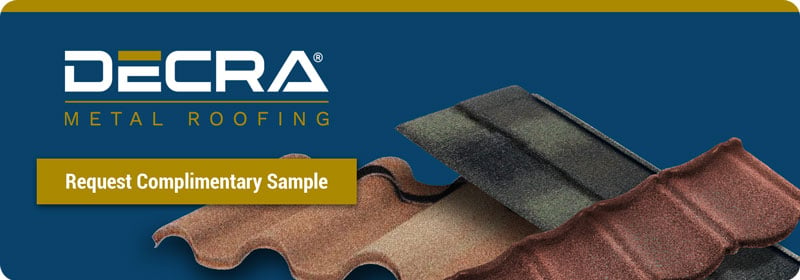
Editor's Note: This blog was originally published in August 2021, but has been updated with relevant information.

